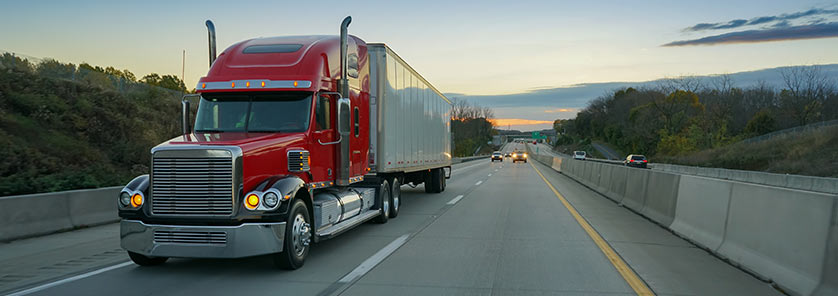Truck drivers are highly trained because of the crucial role they play in maintaining the safety of our roads and highways. Truckers are behind the wheel of very large and potentially dangerous vehicles. As a result, they have a responsibility to operate their commercial motor vehicles in the safest way possible. When truck drivers disregard their responsibility to safely operate those vehicles, other motorists on the road are the ones that suffer.
If you were injured in an accident caused by a careless truck driver, you should not have to fight the battle with the trucking company and its insurers on your own. The attorneys at The Callahan Law Firm stand ready to use their decades of legal experience to handle your case so that you and your family get the justice you deserve.
Our mission is to pursue maximum compensation for our clients, including for medical expenses, lost wages, pain and suffering, physical impairment, and other losses. At The Callahan Law Firm, we limit the number of cases we take on so that we can devote ourselves to the cases and clients we work with. As a result, we have developed a strong track record of meeting and surpassing our clients’ expectations.
We are committed to making the process of being involved in a truck accident case as stress-free as possible for our clients. We offer a free case consultation to answer your questions. If you need an experienced truck accident lawyer, contact us today online or by phone.
Understanding Truck Driver Responsibilities
On the road, truck drivers are responsible for their vehicle, their cargo, and their conduct. The responsibilities that truck drivers have include:
- Seeing – Seeing hazards and others on the road is a critical part of being a truck driver. While driving a truck, drivers must be aware of what is happening ahead of them. They must maintain the vision of at least 12 to 15 seconds in front of them. They also need to be aware of what is happening on their sides and what is happening behind them. Mirror checks, a vigilant view of the road, and careful planning before a lane change are critical parts of seeing and being safe on the road.
- Communicating – Communicating means making sure that everyone around you knows where you are heading and what you are planning. For example, truck drivers should use their turn signal early and continuously before a turn, merge, or another maneuver. When slowing down or stopping, it’s important for truck drivers to make sure they can slow and stop in a safe manner. If they must stop in a non-designated area or for instance, on the side of a freeway, truck drivers should deploy reflective triangles to ensure approaching drivers can see them and avoid a collision.
- Space management – Proper space management is a crucial part of being a safe truck driver. Whether ahead, behind, or to the sides, truck drivers need to know what is going on around their vehicle at all times and leave the proper amount of space. In general, truck drivers should leave at least one second of travel time between themselves and the vehicle in front for every 10 feet of the truck and trailer’s length. For example, that means a driver of a 50-foot tractor-trailer should leave at least five seconds of travel time between themselves and the vehicle ahead.
- Hazard awareness – Hazards can be thought of as anything that could create a danger for any vehicle on the road. Hazards come in many forms, including distracted or aggressive drivers, unaware pedestrians, loose debris on the road, or road conditions such as water, dangerous curves, or construction work. A truck driver must anticipate potential hazards ahead while driving, and take appropriate precautions so that the hazard does not become an emergency that causes a crash.
- Controlling speed – Speed is a leading cause of accidents. Truck drivers should monitor and manage their speed at all times. Speed can affect a driver’s ability to control the truck. Speed can affect a trucker’s ability to navigate curves and hazardous road conditions, and his or her ability to stop when needed. Truckers should follow any speed limits on the road and know their total stopping distance for various speeds.
- Proper braking – Braking is an essential part of safe truck operation. To brake properly, truck drivers consider several factors, including their cargo, road conditions, reaction time, vehicle braking distance, and the total stopping distance of their vehicle. In addition, they must frequently inspect and maintain their brakes to ensure the brakes are in proper working condition.
- Handling cargo – Cargo loads can have different effects on a truck’s performance. Incorrectly secured or overweight cargo can cause the driver to lose control of the vehicle, leading to injury and even death. Truck drivers must ensure that their cargo is properly secured with devices such as tie-downs, straps, and other means of load securement that prevent movement. They must also ensure that the cargo is blocked, braced, and balanced as needed for the truck’s safe operation.
- Avoiding distractions – Physical, mental, and combination distractions (such as cell phones) are a growing problem on the road. The government prohibits truck drivers from using handheld mobile devices on the road. However, too many truck drivers chose to ignore safety rules that are meant to protect other drivers on the road. When truck drivers are distracted, deadly accidents can be the result.
- Avoiding aggressive driving – On a busy road, truck drivers do not have much room for error. An aggressive truck driver can be a significant hazard. When a truck driver is aggressive in speed or another movement such as lane change, it is easy for them to misjudge stopping distances or space to safely change lanes, leading to accidents and injuries.
- Handling hazardous materials – Regulations from the Department of Transportation and the Federal Motor Carrier Safety Administration are strict on the transportation of hazardous materials. Truck drivers must have special hazmat endorsements and must have special markings and placards on their vehicles. Truckers and trucking companies who transport hazardous materials must make sure their vehicle is properly marked and managed from the time cargo is loaded until it reaches its destination.
- Night driving and night fatigue – Nighttime can impair drivers’ vision and their ability to see what is happening around them. Night driving can be especially dangerous when it is combined with inadequate rest. Truck drivers must use the proper headlights and other illumination at night, and they must also take safety steps, such as reducing their speed. Drivers must also ensure that they are adequately rested before getting on the road.
- Driving in various weather conditions – Every weather condition can lead to unique challenges on the road. Truck drivers must constantly monitor weather changes and observe the weather’s effect on road conditions. Reducing speed and increasing the distance between themselves and others are just a few of the steps they can take.
- Accident preparedness – Every time a truck is on the road, an accident is a possibility. Truck drivers must always have a plan and the equipment to deal with an accident. Proper safety equipment includes cellphones and radios, emergency flashers, and reflective triangles. Truckers should always be ready to use those safety devices.
Do You Need Legal Help After a Truck Accident? Contact Our Lawyers Now
The attorneys at The Callahan Law Firm have over 25 years of experience successfully helping people and families injured in truck accidents. Our attorneys have the experience, resources, and in-depth knowledge to help make you whole again.
We are available to answer your questions. For a free case consultation, contact us today online or by phone.



